Scientific name: Quercus gambelli
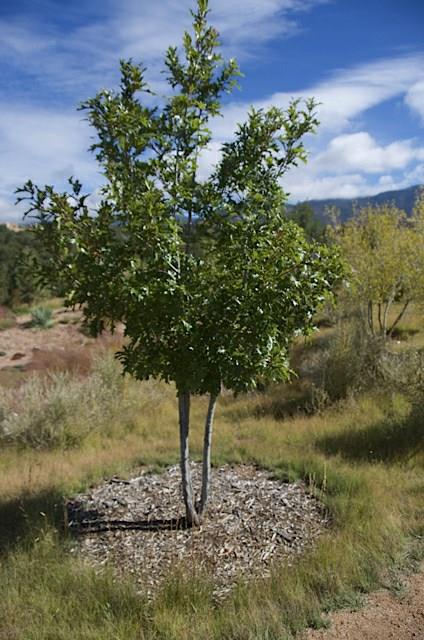
Young Quercus buckleyi tree in Santa Fe Botanical Garden (Photo credit: Janice Tucker)
Common name: Gambel oak
Scientific name: Quercus muehlenbergii
Common name: Chinkapin oak
Scientific name: Quercus macrocarpa
Common name: Bur oak
Scientific name: Quercus buckleyi
Common name: Texas red oak
Family: Fagaceae (beech)
Article by Susan Bruneni
When the Shakespeare in the Garden performance of The Tempest opens August 23rd, a world of enchantment and spirits will inhabit the Botanical Garden at Museum Hill. The plot relies heavily on Prospero’s use of magical powers, aided by spirit Ariel and a host of other spirits and elves. The performance runs August 23-27 and 29–31. Complete details and ticket options are available here >
In Act 5, Scene 1 Shakespeare alludes to “Jupiter’s beloved oak.”
Oaks were sacred to Jupiter (as well as Zeus and other supreme deities associated with lightning, thunder and rain). In ancient Rome, every oak was considered sacred to Jupiter. Jupiter was worshiped as the deity of the oak. Oaks in particular were considered homes for tree spirits. The four species of oaks growing in the Botanical Garden will feel right at home during the performance.
Oaks are native to the Northern Hemisphere. There are 600 extant species of oaks growing in cool temperate to tropical latitudes in the Americas, Asia, Europe and North Africa. Oaks can be deciduous or evergreen. They can be trees or shrubs. The tallest in the world is the Wiltshire Oak in the U.K. with a height of 132 feet. There are two varieties of oaks, the white oak and the red oak.
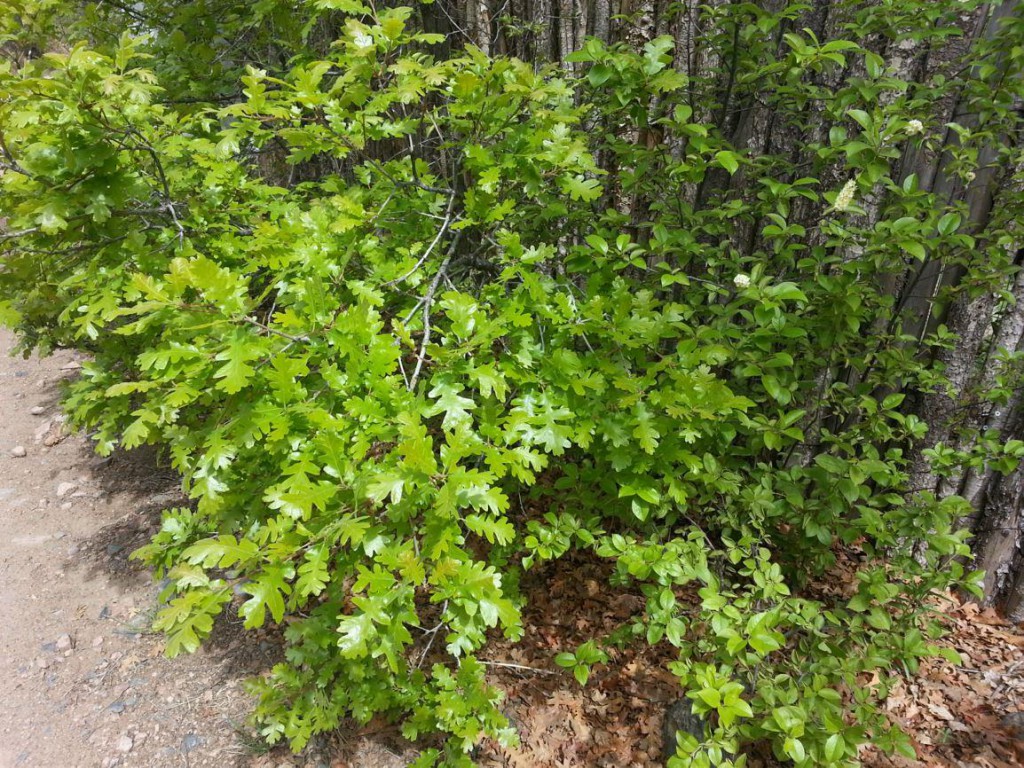
Gambel oak (Photo credit: Joy Mandelbaum)
Our neighboring city is named for the Spanish Duke of Alburquerque (Latin translations of alba –white, querque –quercus, or oak). North America contains the largest number of oak species.
The following species grow in the Botanical Garden at Museum Hill. All are deciduous and produce catkins. The Santa Fe Garden Club is establishing an oak grove at the northeast end of the bridge.
Gambel oak
Quercus gambelli grows in New Mexico, Arizona, Colorado and Utah. It is common in the foothills or lower mountain elevations, including the Santa Fe area. After a fire, Gambel oak quickly re-establishes itself from root sprouts. The plant is also drought tolerant and is a prominent feature at Grand Canyon National Park. Leaves are 2-7 inches long, 1.5 -3.5 inches wide, with 7-11 deep lobes. They are smooth on the upper surface, hairy below. Dark green color turns to brilliant yellow, orange or reddish in the fall. Acorns are ¾-inch long, oval, nearly half enclosed by a bowl-shaped cup with hairy scales. To learn more, read a previous Plant of the Month article focusing on the Gambel oak here >
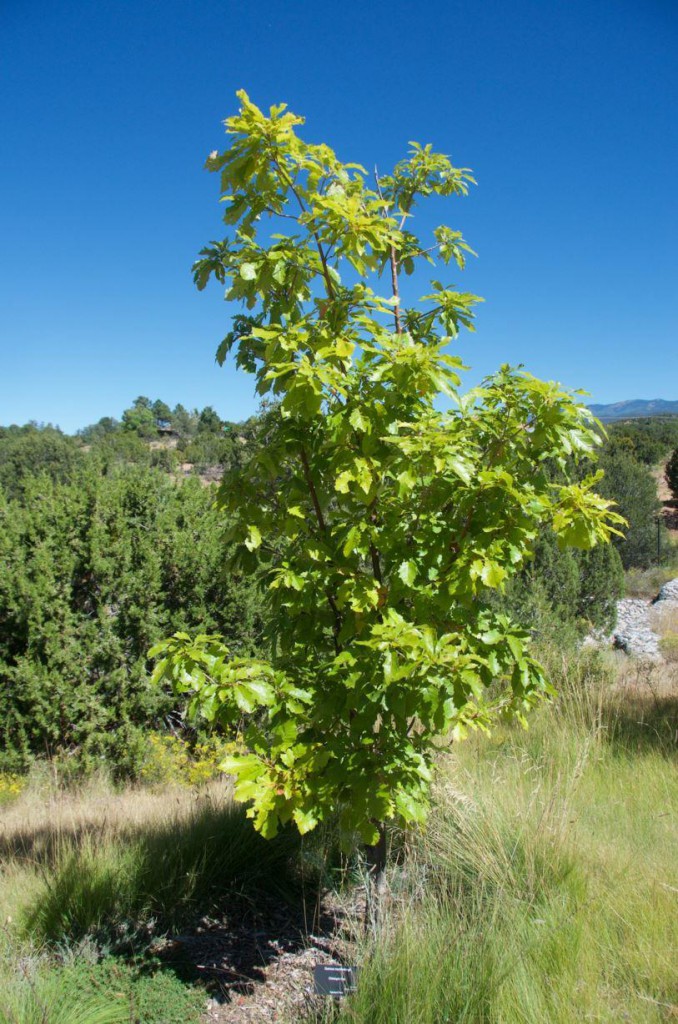
Quercus muehlenbergii tree at Santa Fe Botanical Garden (Photo credit: Janice Tucker)
Chinkapin oak
Quercus muehlenbergii easily grows in average, medium, well-drained soils in full sun. Although it primarily grows in dry, rocky soils in the wild, it seems to prefer moist fertile loams when cultivated. Chinkapins may take up to 30 years to bear the first crop of acorns.
Leaves have shallow lobes with rounded tips. The common name is derived from their similarity to chestnut trees. Acorns are small with no stem.
Bur oak
Can be a tree or shrub and is native to North America. It was common in the Santa Fe outskirts before development altered the terrain. The acorns are the largest of any North American oak (Latin species name macrocarpa—large fruit), and are an important source of food for wildlife and cattle. Heavy nut crops are borne only every few years. The bur oak is the only known foodplant of Bucculatrix recognita caterpillars.
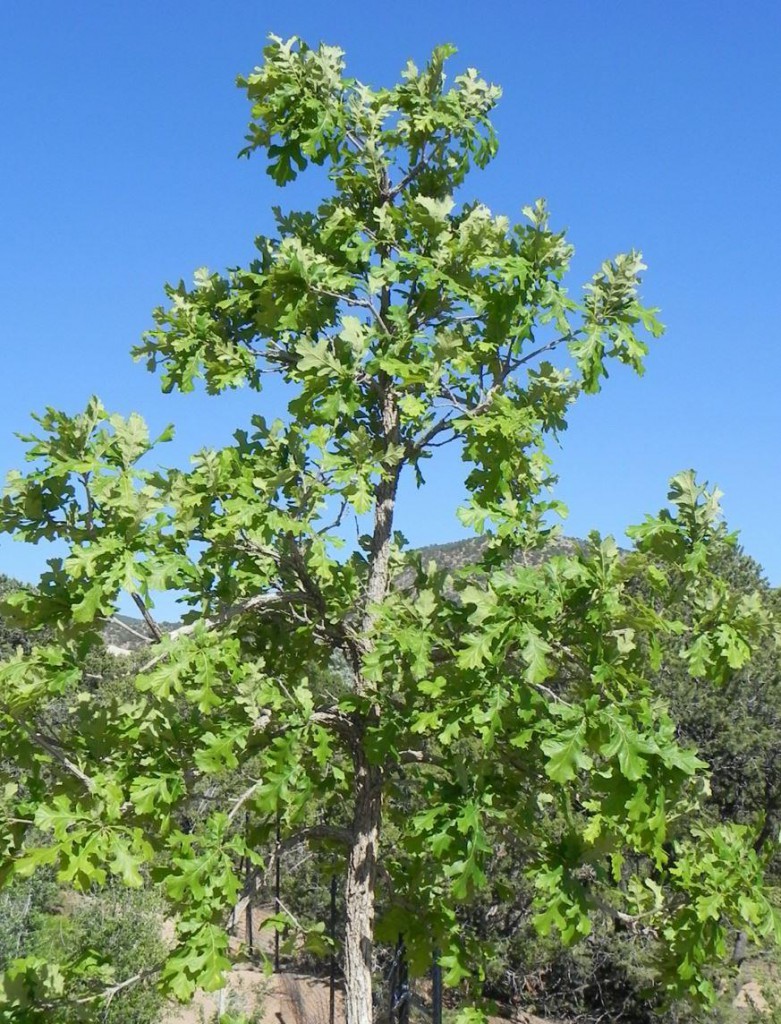
Quercus macrocarpa (Photo credit: Carl Troy)
Wood is very high quality, normally marketed as white oak. Bur oak does well in urban areas and is very fast growing. It can reach 100 feet in height under good conditions. Leaves are 2-6 inches wide and 4-0 inches long, ovate to oblong in shape,
with 2–3 rounded lobes on upper half of leaf and 5–7 deeper lobes on lower half of leaf.
Texas red oak
Quercus buckleyi is 30-50 feet tall at maturity. It is a highly regarded ornamental and shade tree. In autumn the leaves turn vivid red and orange. Leaves are deeply divided into 5-9 lobes, widest at the tip. Acorns are 3/4-inch long.
Will any of those tree spirits stick around after The Tempest? Whisper “Ariel” and see what happens.
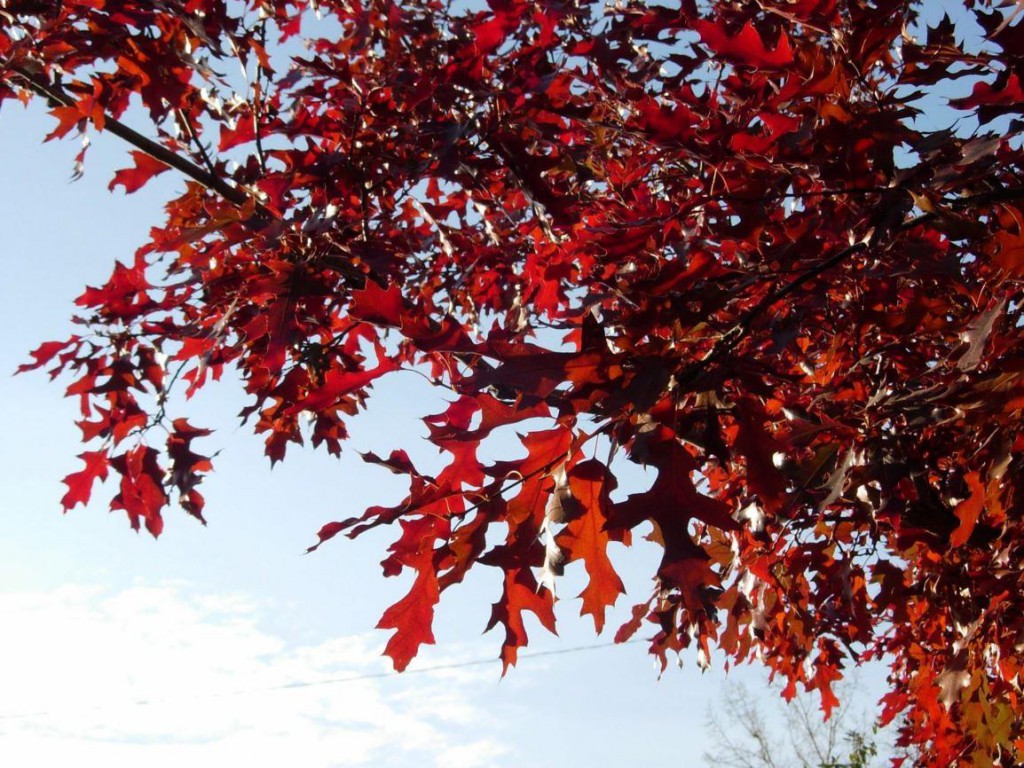
Quercus buckleyi fall color leaves (Photo credit: Tracy Neal)
References:
Shakespeare.mit.edu
Wikipedia
treenm.com
plants.usda.gov


